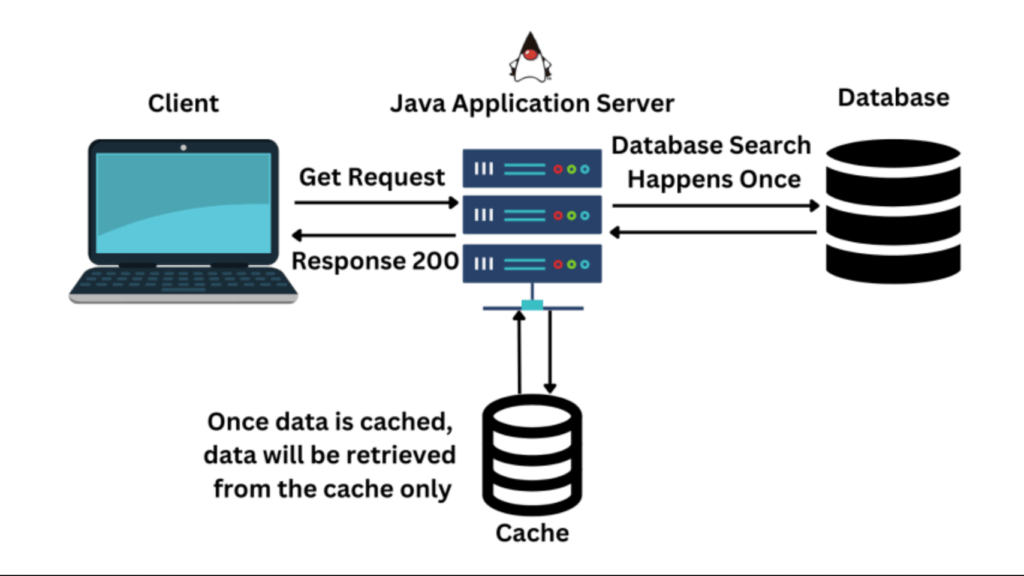What is Caching
In this tutorial, we are going to discuss about what is caching. Caching is a technique used in computing to temporarily store data, content, or resources in a location closer to the user or application, with the goal of improving performance and reducing latency. Caching is a crucial component in system design, especially for applications and services that require high performance, scalability, and responsiveness.
The cache is a high-speed storage layer that sits between the application and the original source of the data, such as a database, a file system, or a remote web service. When data is requested by the application, it is first checked in the cache. If the data is found in the cache, it is returned to the application. If the data is not found in the cache, it is retrieved from its original source, stored in the cache for future use, and returned to the application.

Caching can be used for various types of data, such as web pages, database queries, API responses, images, and videos. The goal of caching is to reduce the number of times data needs to be fetched from its original source, which can result in faster processing and reduced latency.
Caching can be implemented in various ways, including in-memory caching, disk caching, database caching, and CDN caching. In-memory caching stores data in the main memory of the computer, which is faster to access than disk storage. Disk caching stores data on the hard disk, which is slower than main memory but faster than retrieving data from a remote source. Database caching stores frequently accessed data in the database itself, reducing the need to access external storage. CDN caching stores data on a distributed network of servers, reducing the latency of accessing data from remote locations.
Key terminology and concepts
1. Cache: A temporary storage location for data or computation results, typically designed for fast access and retrieval.
2. Cache hit: If the requested data is found in the cache, it is retrieved directly from the cache, bypassing the need to fetch it from the original data source, such as a database or remote server. This is known as a cache hit.
3. Cache miss: f the requested data is not found in the cache, the application retrieves it from the original data source and stores a copy of it in the cache for future use. This is known as a cache miss.
4. Cache eviction: Cache eviction is the process of removing items or data from a cache to make space for new entries when the cache reaches its capacity limit. It’s an essential aspect of caching systems to ensure efficient resource utilization and maintain cache performance.
5. Cache staleness: Cache staleness refers to the condition in which the data stored in a cache becomes outdated or invalid relative to the current state of the original data source. Stale cache data can lead to incorrect or inconsistent results being returned to users or applications, undermining the purpose of caching to improve performance and responsiveness.
Benefits of Caching
- Improved Performance: Caching reduces latency and improves response times by serving frequently accessed data from a cache closer to the requester, eliminating the need to fetch data from distant sources.
- Reduced Resource Usage: Caching reduces the load on backend systems and network infrastructure by serving cached copies of data, files, or content, reducing the amount of data transferred over the network and the computational resources required to generate responses.
- Scalability: Caching helps scale applications and services by offloading the load on backend systems, allowing them to handle more concurrent users or requests without experiencing performance degradation.
- Fault Tolerance and Availability: Caching can improve fault tolerance and availability by serving cached copies of data when the original source is unavailable, ensuring continuous access to resources even in the event of failures or outages.
Overall, caching is a fundamental technique used in computing and networking to optimize performance, reduce latency, and improve scalability and efficiency in a wide range of applications and systems.
That’s all about what is caching. If you have any queries or feedback, please write us email at contact@waytoeasylearn.com. Enjoy learning, Enjoy system design..!!